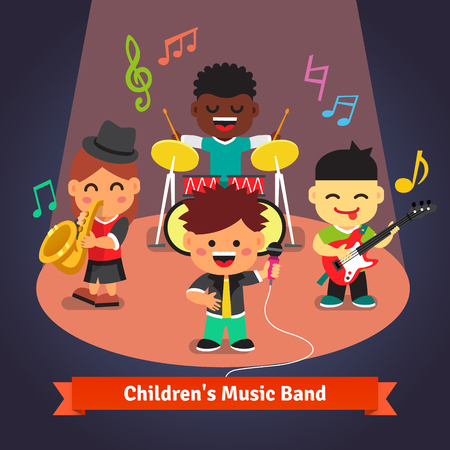Introduction to Bazi and College Choices in the U.S.
In today’s competitive and ever-evolving educational landscape, American students face significant pressure when choosing a college major and institution. These decisions are not only shaped by academic interests and career goals but also by complex factors such as family expectations, social trends, personal values, and economic realities. Amidst this maze of choices, Bazi—also known as the Chinese Four Pillars of Destiny—offers an intriguing framework that can provide fresh insight into self-understanding and decision-making. While rooted in ancient Chinese metaphysics, Bazi’s systematic approach to analyzing an individual’s birth data (year, month, day, and hour) holds unique value for modern American students seeking clarity about their educational paths. By illuminating personal strengths, challenges, and innate tendencies, Bazi can complement traditional American guidance methods and empower students to make more informed choices about their majors and schools. As we explore the intersection of Bazi analysis with the U.S. higher education system, this article will highlight how cross-cultural wisdom can help students navigate one of the most important milestones in their lives.
2. Understanding Bazi: Key Concepts for American Students
Bazi, sometimes called the Four Pillars of Destiny, is an ancient Chinese system that interprets a person’s birth data to reveal personality traits, strengths, and potential life paths. For American students exploring college majors and schools, understanding Bazi can be like adding another lens through which to view your talents and preferences—complementing career assessments or aptitude tests you might already know.
What Is a Bazi Chart?
A Bazi chart is built from your exact birth date and time, breaking it down into four “pillars”—year, month, day, and hour. Each pillar contains both a Heavenly Stem (think: main element) and an Earthly Branch (think: animal sign), creating a unique blueprint similar to a Western birth chart in astrology but with its own logic and cultural background.
The Five Elements Explained
Bazi revolves around five elements: Wood, Fire, Earth, Metal, and Water. Each element has its own qualities and associations. Here’s a quick guide:
| Element | Key Traits | Potential Academic Strengths |
|---|---|---|
| Wood | Growth-oriented, creative, idealistic | Liberal arts, education, environmental studies |
| Fire | Passionate, energetic, expressive | Communications, performing arts, entrepreneurship |
| Earth | Stable, practical, nurturing | Health sciences, social work, business administration |
| Metal | Disciplined, analytical, organized | Engineering, law, accounting |
| Water | Adaptable, intuitive, insightful | Psychology, research, computer science |
How Bazi Connects to Education Choices
Your personal mix of elements may highlight certain natural inclinations—maybe you’re drawn to logic-heavy subjects (Metal) or thrive in people-focused environments (Earth). By understanding your elemental balance in straightforward terms, you can see where your academic energy flows best.
Simplifying Bazi for American Contexts
If you’ve taken a Myers-Briggs or Holland Code assessment at school or online, think of Bazi as another self-discovery tool—just rooted in a different tradition. The goal isn’t to box you in but to help you recognize patterns in your personality that can support wise choices about what to study and where to apply.

3. Matching Bazi Profiles to College Majors
One of the most practical applications of Bazi for U.S. students is using it as a tool to reflect on personal strengths, aptitudes, and interests when considering college majors. Bazi divides personality and life tendencies into five elements—Wood, Fire, Earth, Metal, and Water—each representing distinct attributes that can be mapped to different academic fields.
Relating Bazi Elements to Academic Pathways
For instance, a student with a Wood-dominant Bazi profile often demonstrates creativity, growth orientation, and strong communication skills. Such students might thrive in majors like English, Communications, Environmental Science, or Education, where they can channel their innovative thinking and desire to make an impact. Imagine Sarah, a high school junior from California who loves storytelling and environmental advocacy; her Wood-heavy chart signals her potential fit for media studies or sustainability-focused programs.
Fire Profiles: Leadership and Passion
Students with a Fire emphasis are known for their charisma, leadership qualities, and enthusiasm. They may find satisfaction in majors like Business Administration, Marketing, or Performing Arts—fields that reward dynamic expression and interpersonal influence. Think of Mike from Texas, captain of his debate team and active in student government; his Fire-driven nature could be nurtured through political science or entrepreneurship tracks.
Earth Profiles: Stability and Service
Earth element individuals value stability, reliability, and community service. These students often excel in Health Sciences, Social Work, Psychology, or Urban Planning—careers grounded in helping others and building lasting foundations. For example, Emily from Illinois volunteers at her local food bank and cares deeply about social justice issues; an Earth-strong Bazi chart suggests she might flourish in nursing or public policy.
Metal Profiles: Logic and Precision
Metal-dominated profiles display analytical thinking, discipline, and attention to detail. Majors such as Engineering, Finance, Computer Science, or Law may naturally attract these students. Picture Alex from New York who enjoys math competitions and coding hackathons; their Metal-oriented chart aligns with STEM fields where structure and precision are crucial.
Water Profiles: Adaptability and Curiosity
Lastly, Water element individuals are adaptable, intuitive, and inquisitive—traits that align well with majors like International Relations, Psychology, Journalism, or Marine Biology. Consider Mia from Florida who loves traveling and exploring different cultures; her Water-heavy Bazi points toward global studies or anthropology as fitting choices.
Reflecting on Personal Alignment
Bazi isn’t about predestining your future but providing a framework for self-reflection. By understanding how your elemental makeup resonates with certain disciplines—and comparing those insights to your real-world experiences—you can make more informed decisions about which college majors best support your unique path forward in the American higher education landscape.
4. Choosing the Right College: Beyond Rankings
When it comes to selecting a college in the United States, many students and families focus on national rankings, prestige, or popular opinion. However, integrating Bazi perspectives into this process offers a more personalized approach, helping students assess compatibility with different institutions beyond surface-level metrics.
Bazi and the Search for Academic Fit
Bazi analysis can reveal individual learning styles, natural strengths, and social tendencies. For example, a student whose chart indicates strong “Water” elements may thrive in environments that encourage exploration and adaptability—qualities found at liberal arts colleges with flexible curricula. Conversely, someone with prominent “Metal” characteristics might prefer structured programs and clear professional pathways.
Matching Bazi Elements to Campus Culture
U.S. colleges are diverse not only in academic offerings but also in campus culture and support systems. By understanding their Bazi profile, students can better evaluate whether a school’s atmosphere aligns with their intrinsic needs for growth, stability, and social engagement. The following table illustrates potential matches:
| Bazi Element | College Type | Key Campus Features |
|---|---|---|
| Wood | Research Universities | Innovation hubs, mentorship opportunities, interdisciplinary projects |
| Fire | Liberal Arts Colleges | Active student life, creative communities, leadership roles |
| Earth | Community Colleges/Regional Universities | Supportive faculty, practical training, strong local ties |
| Metal | Technical Institutes/Professional Schools | Clear career paths, high standards, competitive environment |
| Water | Experimental/Alternative Colleges | Flexible curriculum, global programs, emphasis on adaptability |
Considering Holistic Well-being Alongside Academics
Bazi encourages a holistic view of well-being that encompasses mental health, social harmony, and lifestyle balance. When evaluating U.S. colleges, students should consider factors such as campus safety, mental health resources, diversity initiatives, and extracurricular options that support their overall development—not just academic achievement.
A Systematic Approach to Decision-Making
By combining traditional college research with insights from Bazi analysis, U.S. students can make more informed choices tailored to their unique personalities and long-term aspirations. This integrative approach moves beyond rankings to prioritize authentic fit—ensuring that the chosen institution is truly conducive to both academic success and personal fulfillment.
5. Integrating Bazi Insights with Modern College Counseling
Bridging Eastern Wisdom and Western Guidance
Incorporating Bazi into U.S. college counseling requires a nuanced approach that respects both traditional wisdom and contemporary best practices. Bazi offers unique, personalized insights into a student’s strengths, weaknesses, and natural inclinations—information that can complement the data-driven assessments and self-exploration encouraged by American counselors. By thoughtfully blending these perspectives, students and families gain a holistic toolkit for navigating one of life’s most significant decisions.
Practical Strategies for Integration
1. Use Bazi as an Additional Perspective
Rather than replacing standard career assessments or personality tests like Myers-Briggs or Holland Codes, Bazi readings can be positioned as another lens through which to understand personal tendencies. Counselors can invite students to compare their Bazi profiles with results from conventional tools, encouraging critical thinking about where patterns align or diverge.
2. Facilitate Open Communication with Families
Bazi is often most meaningful when discussed within the family context. U.S. counselors can host informational sessions where families learn about both Bazi and mainstream college planning, fostering respectful dialogue and shared decision-making while emphasizing student agency.
3. Integrate with Academic and Career Resources
Counselors might suggest ways that Bazi elements—such as a student’s favorable “elements” or “pillars”—can inspire major selection or extracurricular exploration. For example, a strong “Water” element may point toward communication-heavy fields, but this should always be checked against real-world aptitudes, interests, and available opportunities in the U.S. job market.
Addressing Skepticism and Ethical Considerations
1. Transparency and Informed Choice
Counselors must clearly explain what Bazi is (and isn’t), highlighting its cultural roots, interpretive nature, and role as a supplementary tool—not a deterministic rulebook. This transparency empowers students to weigh advice critically rather than accept it unconditionally.
2. Respect for Belief Diversity
The United States is religiously and philosophically diverse; some families may view metaphysical systems like Bazi with skepticism or disinterest. Counselors should always offer opt-in participation and never pressure students to engage if it conflicts with their values or beliefs.
3. Ethical Boundaries in Practice
Bazi should never be used to override empirical evidence or professional standards in advising. Decisions about colleges or majors must remain rooted in the student’s academic record, personal goals, financial circumstances, and well-researched information about schools and programs.
Conclusion: A Synergistic Path Forward
When applied with sensitivity and professionalism, integrating Bazi with U.S.-style college counseling can broaden horizons without sacrificing rigor or inclusivity. The ultimate goal is to empower each student to make informed, authentic choices—drawing on both ancient insight and modern expertise.
6. Success Stories and Cautionary Tales
When considering whether to use Bazi in making higher education decisions, it’s helpful to look at real-life examples—both of triumphs and of potential pitfalls—within the American context. These stories, drawn from either direct experiences or composite scenarios, offer a nuanced view of what happens when ancient wisdom meets modern academic choices.
Success Stories: When Bazi Empowers Students
Take Jessica, a second-generation Chinese-American student from California. Unsure whether to pursue engineering or psychology, she worked with her family and a Bazi consultant. Her chart highlighted strong “Wood” and “Water” elements, which corresponded with creativity and communication. This insight encouraged her to explore fields related to human behavior and innovation. She ultimately chose cognitive science at a university known for interdisciplinary studies—a decision that aligned with both her interests and her Bazi reading. Years later, Jessica credits the process for helping her find a path that balanced her strengths, cultural heritage, and personal fulfillment.
Bazi as a Complementary Tool
For students like Mark, whose parents immigrated from Vietnam, Bazi provided a way to bridge generational expectations with his own aspirations. While his parents favored traditional STEM majors, Mark’s Bazi analysis suggested aptitude in the arts and social sciences. Supported by this alternative perspective, he negotiated a compromise: double majoring in economics and digital media. The result was not only academic success but also improved family relationships, demonstrating how Bazi can serve as an empowering conversation starter rather than a rigid prescription.
Cautionary Tales: Recognizing Limitations
However, not every story is so positive. Consider Emily, a student with no prior exposure to Eastern metaphysics who became intrigued by Bazi after seeing it on social media. She used an online calculator and followed generic advice about suitable majors—without deeper understanding or professional guidance. Unfortunately, she found herself in a program that didn’t resonate with her authentic interests or learning style. This led to dissatisfaction and eventually changing majors after two years. Emily’s experience highlights the risk of oversimplification and the need for culturally sensitive application when integrating Bazi into educational planning.
The Importance of Balance
These stories illustrate both the benefits and boundaries of using Bazi for higher education decisions in the U.S. context. When thoughtfully integrated—with respect for individual agency and alongside conventional career counseling—Bazi can be a valuable tool for self-discovery and cross-cultural dialogue. But relying solely on metaphysical insights without critical reflection or broader support may lead to frustration or missed opportunities.
Navigating Personal Growth
The key takeaway is that Bazi can enhance—not replace—modern approaches to academic decision-making. American students benefit most when they use it as one part of a holistic strategy that includes self-assessment, professional advice, and open family communication. By learning from both successes and cautionary tales, students can make informed choices that honor their unique backgrounds while preparing them for future challenges.


